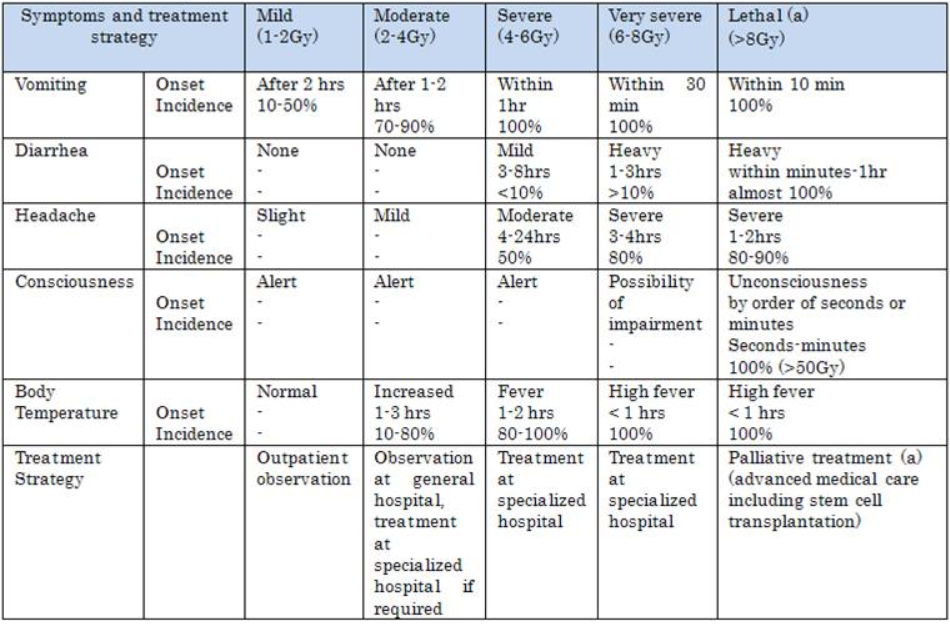I have written several blog posts about the dangers of radiation exposure to human health. Today I thought that I would mention ten symptoms of radiation sickness or “acute radiation syndrome.” These symptoms are certainly unpleasant to consider or experience but in our increasingly nuclear world, it is important for the public to be aware of these symptoms. If you have these symptoms, without prompt medical treatment, you will probably die.
1) Nausea and vomiting. If a person is exposed to a large dose of radiation, they will experience disorientation and vomiting within an hour.
2) Bruising and wounds not healing. Blood clotting is dependent on clot-forming platelets in the blood. Radiation can reduce the number of clot-forming platelets which results in serious bruising. In addition, the healing of wounds which is dependent on clotting will be impaired.
3) Bleeding out of body orifices. When the blood clotting mechanism is damaged, you may also bleed from mouth, nose and/or anus.
4) Blood in stools and vomit. Radiation can damage the cells that line the stomach and the intestines. This leads to irritation of the stomach and intestines followed by blood leaking into stomach and intestines.
5) Radiation burns. The first sign of radiation induced burns is severe itching of the exposed skin followed by reddening, blistering, the appearance of open sores and skin sloughing off.
6) Loss of hair. Radiation exposure also damages the hair follicles. This may lead to the rapid loss of hair.
7) Headaches, weakness and fatigue. Radiation damages red blood cells leading to anemia. Blood pressure also drops from radiation exposure. The result of these effects can be headaches, a feeling of weakness, a lingering sense of fatigue and/or fainting.
8) Ulceration of the gastrointestinal track. Radiation exposure can cause ulcers to form all the way from the mouth through the stomach to the intestines. The visible manifestation of this will be sores on your lips and in your mouth.
9) Tremors and seizures. Prolonged exposure to intense radiation can cause severe damage to the central nervous system which can cause seizures. One effect of this damage could also be lack of ability to coordinate voluntary muscles resulting in tremors.
10) Fever and infections. Severe radiation exposure can destroy white blood cells and bone marrow. The loss of the cells that fight infections can result in opportunistic infections leading to serious fevers.
These symptoms might be the result of radiation exposure of one or a few people due to accidents in the handling, processing, transportation or storage of highly radioactive nuclear materials. In this case, the probability of prompt medical attention is high. On the other hand, if there is a major nuclear power plant accident or detonation of a nuclear bomb or a dirty bomb, thousands or even millions could be affected. In that case, with the confusion and destruction, the possibility of medical attention becomes remote.
This table covers some of effects of different dosages of radiation measured in grays (Gy) which represent one joule of energy being absorbed by one kilogram of matter.







